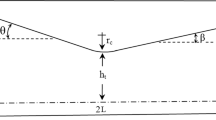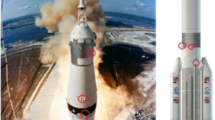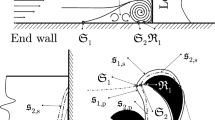Abstract
Choked converging nozzle flow and heat transfer characteristics are numerically investigated by means of a recent computational model that integrates the axisymmetric continuity, state, momentum and energy equations. To predict the combined effects of nozzle geometry, friction and heat transfer rates, analyses are conducted with sufficiently wide ranges of covergence half angle, surface roughness and heat flux conditions. Numerical findings show that inlet Mach and Nusselt numbers decrease up to 23.1% and 15.8% with surface heat flux and by 15.13% and 4.8% due to surface roughness. Considering each convergence half angle case individually results in a linear relation between nozzle discharge coefficients and exit Reynolds numbers with similar slopes. Heat flux implementation, by decreasing the shear stress values, lowers the risks due to wear hazards at upstream sections of flow walls; however the final 10% downstream nozzle portion is determined to be quite critical, where shear stress attains the highest magnitudes. Heat transfer rates are seen to increase in the streamwise direction up to 2.7 times; however high convergence half angles, heat flux and surface roughness conditions lower inlet Nusselt numbers by 70%, 15.8% and 4.8% respectively.
Similar content being viewed by others
References
Ahmad R A 2001 Discharge coefficients and heat transfer for axisymmetric supersonic nozzles.Heat Transfer Eng. 22: 40–61
Assovskii I G, Rashkovskii S A 2001 Low-frequency instability of solid rocket motors: influence of the Mach effect and charge geometry. Combustion,Explosion Shock Waves 37: 321–330
Back L H, Massier P F, Cuffel R F 1996 Some observations on reduction of turbulent boundary-layer heat transfer in nozzle.AIAA J. 4: 2226–2229
Bartz D R 1957 A simple equation for rapid estimation of rocket nozzle convective heat transfer coefficients.Jet Propulsion 27: 49–51
Chapra S C, Canale R P 1990Numerical methods for engineers 2nd edn (Singapore: McGraw Hill)
Incropera F P, De Witt D P 1990Fundamentals of heat and mass transfer 3rd edn (New York: John Wiley & Sons)
Kammash T, Godfroy T 1997 An open cycle gas core fusion rocket for space exploration.Acta Astronaut. 41: 229–237
Kim H D, Kim J H, Park K A, Setoguchi T, Matsuo S 2003 Computational study of the gas flow through acritical nozzle.Proc. Instn. Mech. Engrs. 217: 1179–1189
Laney C B 1998Computational gasdynamics (Cambridge: University Press)
Lear W E, Sherif S A, Langford J R 1997 Efficiency and gas dynamics analysis of two-phase mixtures in supersonic nozzles with inter-phase heat transfer and slip.Acta Astronaut. 40: 701–706
Massier P F, Back L H, Noel M B, Saheli F 1970 Viscous effects on the flow coefficient for supersonic nozzle.AIAA J. 8: 605–607
Paik J S, Park K A, Park J T 2000 Inter-laboratory comparison of sonic nozzles at KRISS.Flow Measure. Instrum., 11: 339–344
Park K A, Choi Y M, Choi H M, Cha T S, Yoon B H 2001 The evaluation of critical pressure ratios of sonic nozzles at low Reynolds numbers.Flow Measure. Instrum. 12: 37–41
Ribault C L, Friedrich R 1997 Investigation of transport equations for turbulent heat fluxes in compressible flows.Int. J. Heat Mass Transfer 40: 2721–2738
Sato T, Tanatusgu N, Naruo Y, Kashiwagi T, Omi J, Tomike J, Nishino T 2000 Development study on ATREX engine.Acta Astronaut. 47: 799–808
Vargas J V C, Bejan A 2001 Thermodynamic optimization of finned crossflow heat exchangers for aircraft environmental control systems.Int. J. Heat Fluid Flow 22: 657–665
Wu J S, Tseng K C 2001 Analysis of micro-scale gas flows with pressure boundaries using direct simulation Monte Carlo method. Comput. Fluids 30: 711–735
Author information
Authors and Affiliations
Rights and permissions
About this article
Cite this article
Ozalp, A.A. Numerical analysis of choked converging nozzle flows with surface roughness and heat flux conditions. Sadhana 31, 31–46 (2006). https://doi.org/10.1007/BF02703798
Received:
Revised:
Issue Date:
DOI: https://doi.org/10.1007/BF02703798




